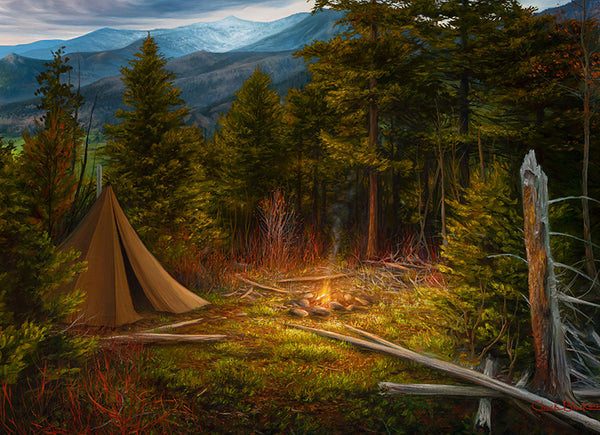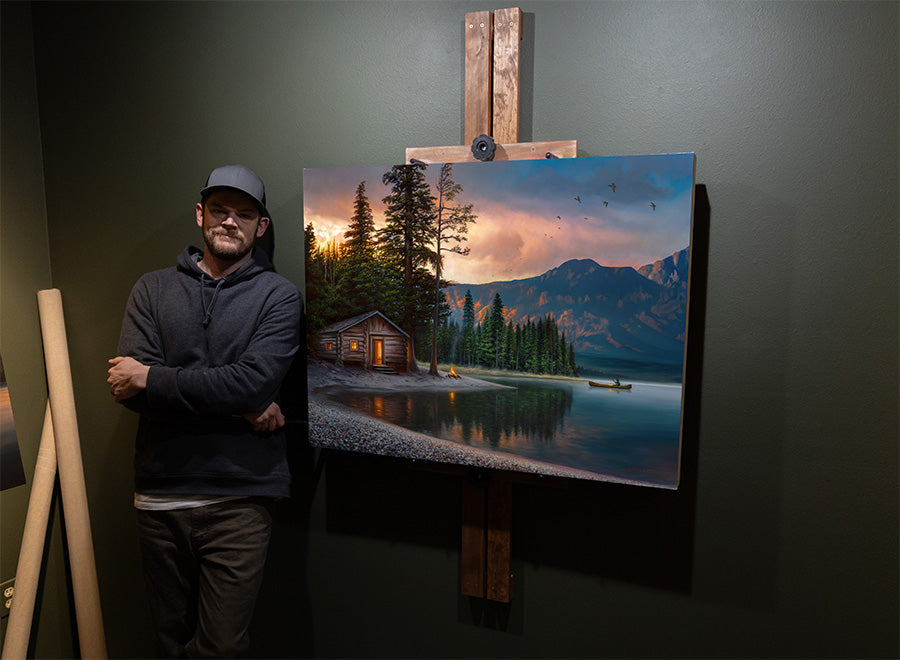This blog is supported through the affiliate links below
Painting Grass and Foliage: Techniques for Capturing Foreground Detail in Your Paintings
There are several ways to approach grass and foliage in your paintings depending on the outcome you desire. In this post I'm sharing one of the more simple ways one could approach grass and foreground details that produces impressive results.

Note: This blog contains affiliate links and purchasing through them supports our site at no extra cost to you.
At first glance, painting something like this may seem like a lot of tedious work and careful planning. However I must say that achieving this type of detail in my foregrounds is one of the more relaxing parts of the process. In fact I don't plan any of the specifics out before I begin and tend to go with the flow. The beauty of painting grasses and ground litter like this is as long as you capture the general lighting/color as a whole, you don't need to worry about the tiny specifics. Grass can grow any way it pleases and the ground can change from as little as the wind. So keep that in mind and keep your thoughts loose along with your brushwork.
The first thing to do is to cover the entire area you're working using a wider brush. I block in the area with a few of the more common colors.

I like to add a little bit of rough detail but I keep it to a minimum. At this stage I typically stick with the angled flat brush and focus on nothing more than covering the canvas.
Once covered in general shapes and colors, I then switch to a detail brush like this dagger and I load it heavier with a nice roll of paint.

I dance and twirl the brush around letting the paint melt off the brush onto the canvas. I want many small natural patterns and to achieve that I delicately flutter the brush in all sorts of different ways with different brush strokes.

Depending on the angle, the pressure, the paint load, and the part of the brush that contacts the canvas surface, it produces different patterns or textures. This is typically a small trial and error type of process where I'm not shy to add lots of paint and I'm willing to change directions and try different colors. Eventually I'll hit my stride and develop a procedure that produces the results I'm looking for. Patience is important here with all the small brushstrokes.
I switch colors often until it starts to exhibit this complex pattern of ground litter and foliage. I prefer using a brush like this over say a fan brush because I feel like with patience it produces a more natural organic feel. I like to use oils with liquin impasto medium as the medium helps me layer colors on top of each other without blending together and becoming mud.



Grow Your Painting Skills and Resources
Instant access to 1000s of royalty-free reference photos of landscapes and wildlife as well as step by step oil painting videos. Checkout My Memberships for more info.

I'm Chuck Black, landscape and wildlife artist based in Southwest Montana.





